Steve Morrisette
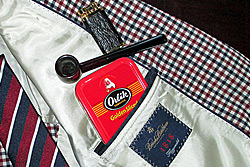 Both the ladies and gentleman should find application in this month’s column. I rue the day Rupert Murdoch got control of the Wall Street Journal. Over the twelve years I spent working in journalism, the WSJ was always respected and considered pretty reliable when it came to the ideals of journalistic integrity. Since the name Murdoch and the word integrity go together like oil and water, or hacking and privacy, I am surprised to find inspiration for this column among the pages of the Journal. The style and travel section to be precise. I doubt Mr. Murdoch spends much time trying to influence style and fashion, so I imagine the Personal Journal section is fairly uncorrupted.
Both the ladies and gentleman should find application in this month’s column. I rue the day Rupert Murdoch got control of the Wall Street Journal. Over the twelve years I spent working in journalism, the WSJ was always respected and considered pretty reliable when it came to the ideals of journalistic integrity. Since the name Murdoch and the word integrity go together like oil and water, or hacking and privacy, I am surprised to find inspiration for this column among the pages of the Journal. The style and travel section to be precise. I doubt Mr. Murdoch spends much time trying to influence style and fashion, so I imagine the Personal Journal section is fairly uncorrupted.
In a recent issue of that section in the WSJ, the cover piece was about the growing acceptance of unlined suits in the boardroom. Since most of you spend a good deal of your time in the boardroom, I thought passing on information about unlined suits, sport coats and blazers would be a boon to all of the PM.com readers — the ladies included.
OK, … Truly, unlined or "unstructured" suits and jackets are just so useful in hot weather … whether you are working in the boardroom, or just working for room and board.
Some Background
I will be addressing mostly suit coats, jackets and blazers and shall use those terms interchangeably as we go.
Jacket linings serve several useful purposes. First, they allow for ease in donning and removing the garment. This is especially true of the sleeves, particularly when the linings are a slippery material like silk or various rayons, polyesters and my favorite; cupro. Cupro is a recycled cotton product that yields an excellent silky fabric that breaths like cotton. Cupro is truly wonderful for the linings of trousers in particular.
Linings also help to give a garment structure and form, helping it lie against the body in a pleasing way. It also helps resist wrinkling. These latter two qualities are especially important to the boardroom denizens among us. Lastly, linings help to protect the main fabric of the garment from perspiration and hold in body heat for added warmth.
Yet therein lies the Achilles’ heel of linings. Who wants to retain body heat in the dog days of summer?
In the past, unlined and unstructured suits and jackets were often too shapeless and prone to wrinkles, causing a look that, if not disheveled, at least appeared too casual for anything beyond a picnic or attending a ball game. Most well dressed men and women wouldn’t think of wearing unlined suits or blazers to the office or out to dinner. As a result, very few such garments were created or available. The public would not buy enough of them to create the necessary demand needed for labels and manufacturers to produce many.
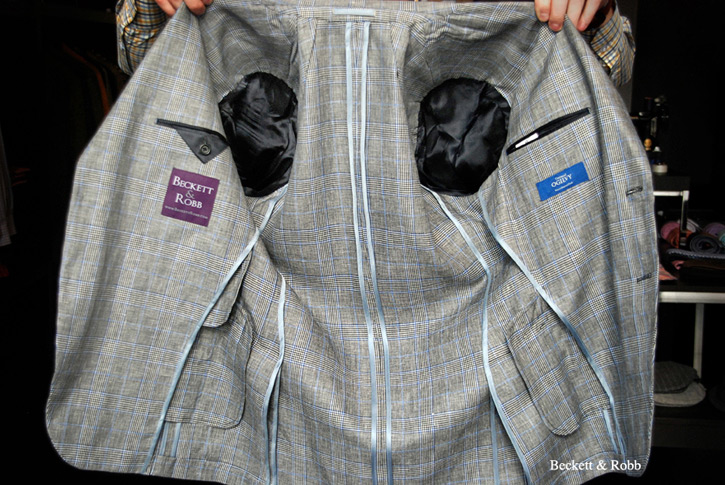
Compounding this problem was the fact that a well made unlined jacket cost more to make because, with its’ interior stitching and seams exposed, extra care and expertise were required to create a coat that didn’t look like the reverse side of a two dimensional Hollywood movie set. The interior had to be finished to the same fine level as the exterior and any tailor will tell you that that is the more difficult task of the two. And, though not truly logical, most buyers thought that no lining meant the garment should cost less!
A Better World
The very good news is that today, a good variety of unlined, half lined and demi-lined jackets and suits are being made and worn with good effect.
It seems tailors showed manufacturers how to put together garments that looked very nice inside and still were free of all, or most of the linings. And best of all, techniques are used that still impart the vital elements of good garment structure and a nice drape to the fabric.
A Few Definitions
Unlined:
It means just that; no lining material, though some garments termed "unlined" may still have lining along the shoulders, upper back, or perhaps, just the sleeves. Occasionally an unlined jacket will have thin shoulder pads for increased structure to the shoulder line — a very good idea, as this matters little in staying cool and contributes greatly to a nice form.
Half Lined:
This usually refers to a jacket that has lined sleeves and the upper back and shoulders are lined as well.
Demi-Lined:
This is a term I use to describe structure and linings that fall between the two above. Such a jacket might have just the sleeves lined, or just the upper back, shoulders and upper chest. Various combinations of reduced linings could also be what I would term demi-lined.
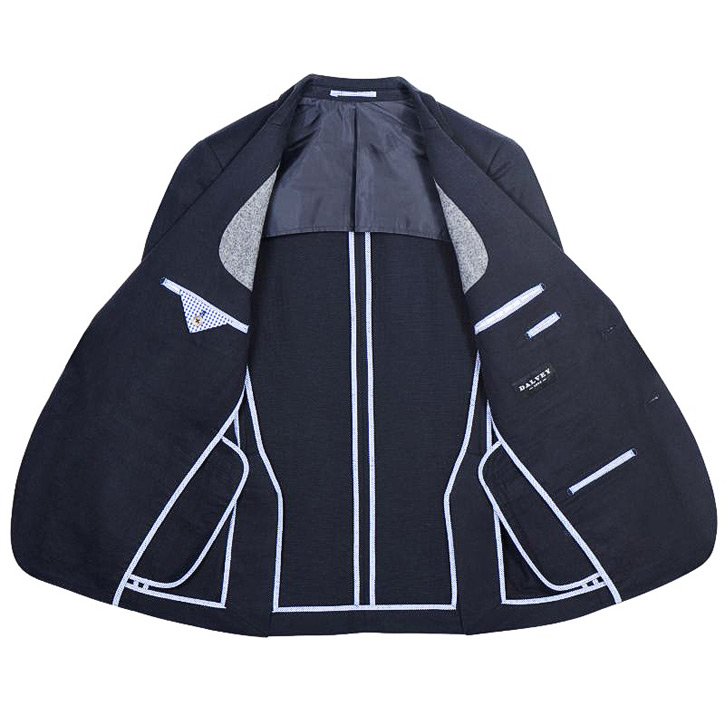
Benefits for You
- You get to wear a jacket or suit in hot weather and not look as though you just left an IRS audit.
- You can remain cool while you look cool. To me, that alone is more than enough.
But wait; there’s more.
You can be far more comfortable in all situations where you "should" wear a suit or sport coat and you’ll look far classier than the other nine-tenths of the poor guys around you as they are either sweating in their lined suits or, appallingly, are in their shirt sleeves.
Another benefit that many younger guys are realizing is that unlined and unstructured jackets can dress down without looking too casual or sloppy.
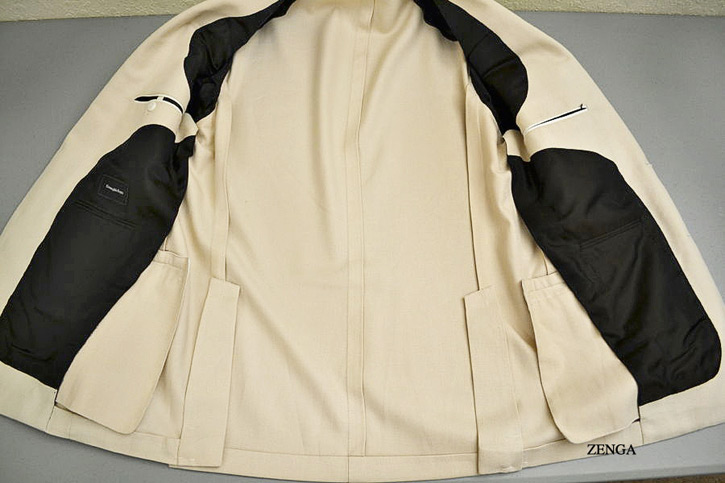
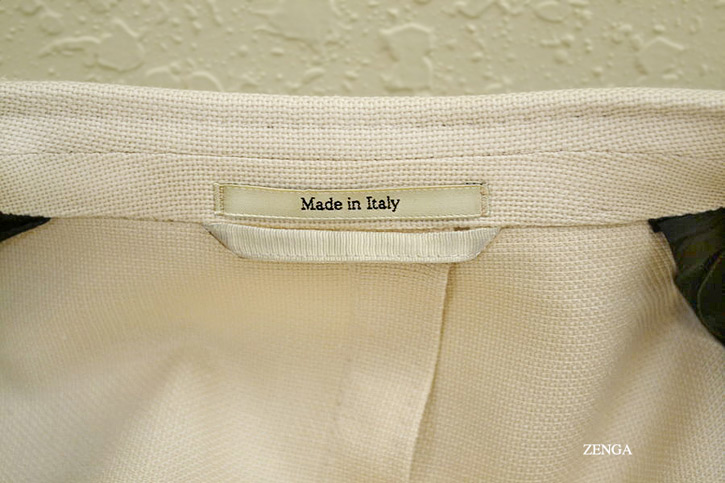
Upping your Game
Such a jacket is the perfect garment to begin to make the leap across that seemingly cavernous gorge separating the too casual "T-shirt and jeans" look and a more stylish and gentlemanly appearance, while still avoiding the dreaded "coat and tie" scenario many men still recoil from today. (Isn’t it ironic that in the attempt to avoid looking "old fashioned", one is actually behind the times when it comes to current style trends?)
Many of the more conservative styles, fabrics and colors are getting the unlined treatment. This means more comfortable dress for those working in law offices and certain financial institutions.
What I really like are all the bright summer colors and bold patterns so deftly employed these days by a wide range of labels and designers when creating their lightweight and unstructured garments.
Here again is a way to don a sport coat or blazer, paired with chinos and a collard shirt and not look like Reginald Van Uberstiff going off to the Club.
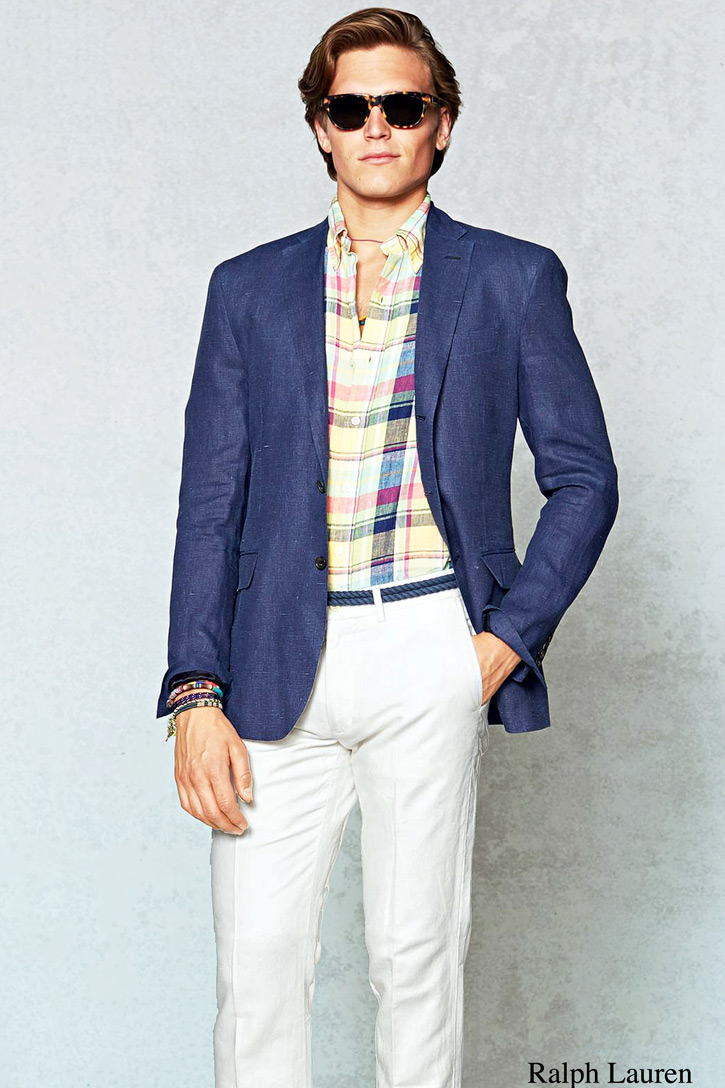
Or my go to; a nice performance fabric polo shirt (sans graphics), linen trousers, no socks and a jazzy unlined blazer. Heck, you can even slip an unlined sport coat on over a nice T-shirt and jeans. You’ll still look good and remain—truly the most essential aspect—cool.
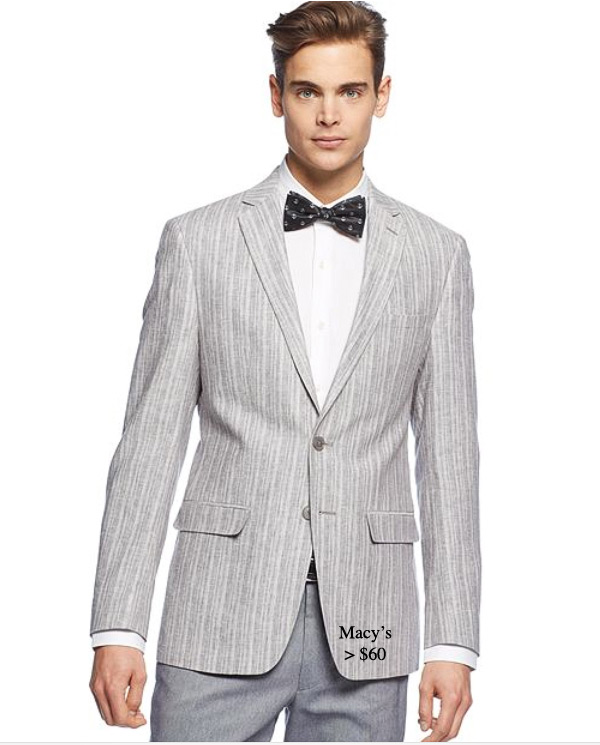
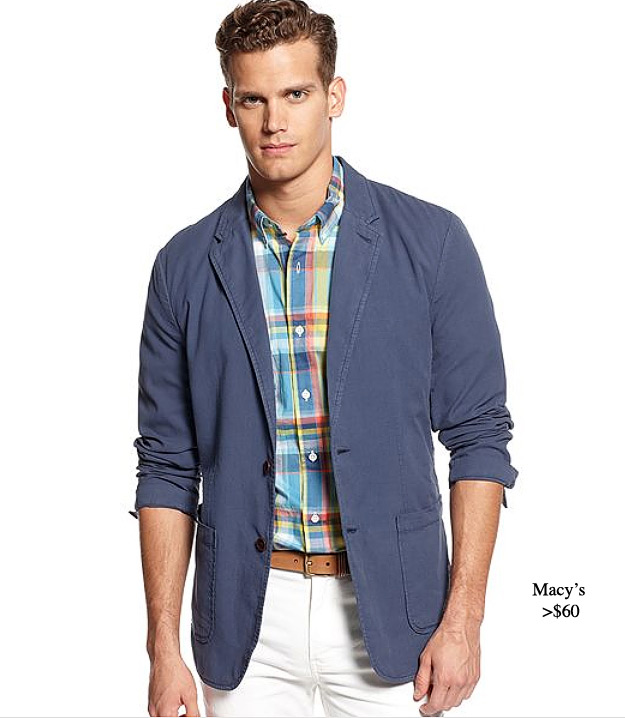
Thin Walled Pipes
Pipes do not burn hot.
At a pipe show not long ago I heard the following exchange:
- Pipe smoker #1: "Have you tried one of the reverse calabashes?"
- Pipe smoker #2: " You mean those two chambered deals? No."
- Pipe smoker #1: " Why not? I hear they smoke cooler."
- Pipe smoker #2: "They’re funny looking, besides, I know how to smoke."
It took a beat or two for me to realize what smoker # 2 was saying; he knows how to smoke properly. Properly, as in: pace and control that allows the tobacco to burn slowly and generate as little heat as possible. Not only does this reduce or eliminate tongue bite, it also keeps the bowl far cooler to the touch.
Pipes Do Not Burn Hot
In fact, pipes should not burn at all. The tobacco burns, and we control the combustion and, thus, the resultant heat that is generated in the burning.
I know … this is sort of semantic nit picking, but it is necessary to combat the misapprehension that wall thickness determines how hot a pipe smokes and feels in the hand.
Pipe smoker #2 quoted above seems to have gained the skill to moderate his smoking, control the combustion, and hence, the heat and ultimately the flavor, when he indulges. Surely this is the key.
The Good Old Days
I have noticed over the years that most vintage pipes—those made prior to say, 1970—would today be considered thin walled pipes. Back in the heyday of commercial pipe manufacturing when pipe smoking was ubiquitous in public and private spaces, pipes mostly had thin walls. If a competitive advantage could be gained by producing pipes that smoked cooler—pipes with thick walls—then surely vintage pipe design would reflect this in a large majority of older pipes.
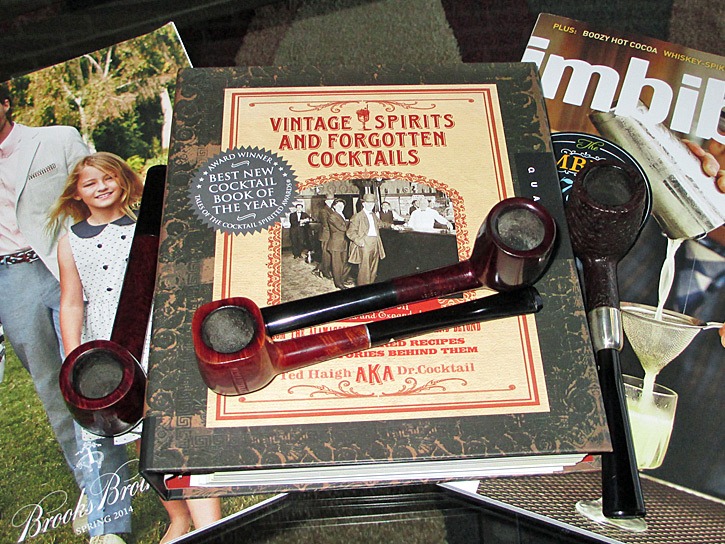
Since this seems not to be the case, and one could assume blends of old did not burn cooler than today’s tobaccos, I believe thin walled pipes do not smoke inherently hotter than thick walled pipes.
I would think that more wood in thickness and exterior surface area absorbs more heat, but I doubt this could reduce the perceived temperature on the tongue. The amount of heat on the exterior of the bowl would be reduced by more surface area, but it would require a very thick wall indeed to make an important difference compared to proper pacing to reduce over-combustion.
Physician, Heal Thyself
I have rather a poor smoking technique when it comes to moderation of the burn. This is exacerbated because I am a habitual clencher. (I am clenching as I write this now.)
Generally, I puff too hard, too rapidly and too often. This is especially true when I am working in the shop or engaging in some other hand/eye intensive activity. So as a result, I will overheat the tobacco and too, the pipe itself.
If I am smoking a thin walled pipe, say my great Paolo Becker cherry wood poker, the exterior naturally heats up under such circumstances.
But I don’t blame the pipe.
Doing smoky parking lot burnouts results in bald tires. Is the tread then, too thin or too soft? No, the driver was too tough on the tires.
Overheating your tobacco or your tires produces the same detrimental results. I’m not going to blame Paolo or Hankook!
Conclusion
We cannot control our body’s natural temperature, so unlined or semi lined jackets are ideal to help keeps us cool and looking well in the heat.
We can control the burn of our tobacco, so that thin walled pipes can and will deliver a cool smoke and we can be happy with them as well.
the Gentleman Smoker’s Tip
If you are purchasing off the rack or ready to wear jackets, it is best to avoid surgeon’s cuffs. Such working buttons on a jackets’ sleeves create a real limitation if the sleeve length needs alteration. This is especially true if the sleeves are too long.
I wish labels and designers would drop this practice. It may be en vogue and a selling point to some, but ultimately it limits sales to the more knowledgeable buyers and decreases our choices overall.
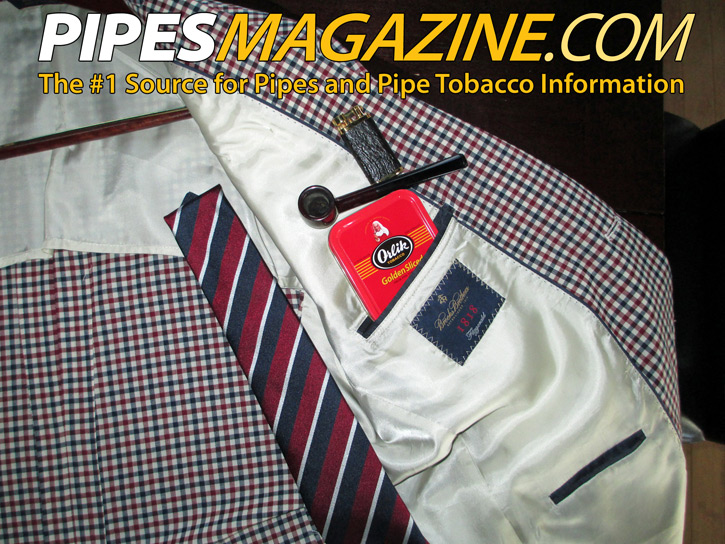
Cheers to all,
Steve Morrisette
the Gentleman Smoker
|
Steve Morrisette is an artisan pipe maker, relentlessly snappy dresser, and self-confessed Virginia gentleman. He makes artisan pipes for discerning collectors, and scours the internet and shops of all types seeking information and fine garments, hats, watches, shoes, and jewelry – anything related to the gentleman’s lifestyle. Steve also spent several decades as a working drummer and photographer/photojournalist. You can find his pipes at www.smpipes.com, and catch his style photos and latest pipes on Facebook and Instagram. |



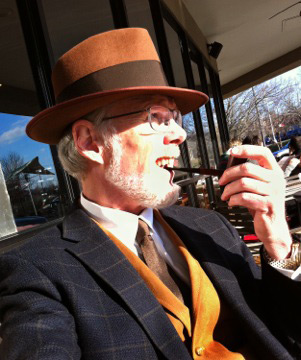














Steve:
Great stuff! There’s a novelist lurking inside.
Dave
I had a couple of unlined jackets; or maybe they were half-lined, it was a long time ago. I never could get used to the lightweight feel of them, and never felt “properly dressed” in them. For the boardroom? I don’t think so. Quasi-casual has never worked well there.